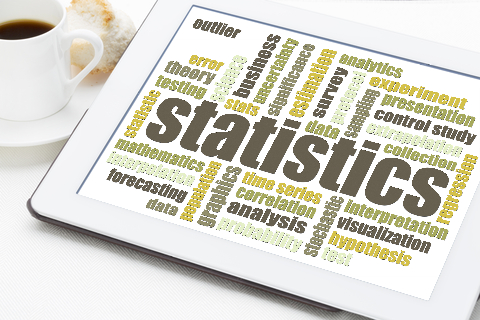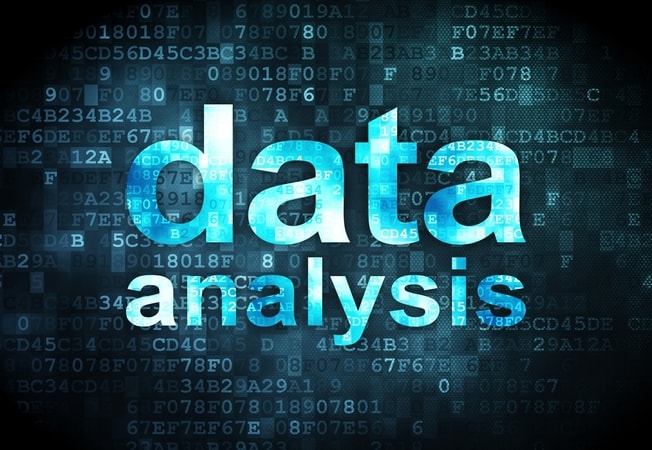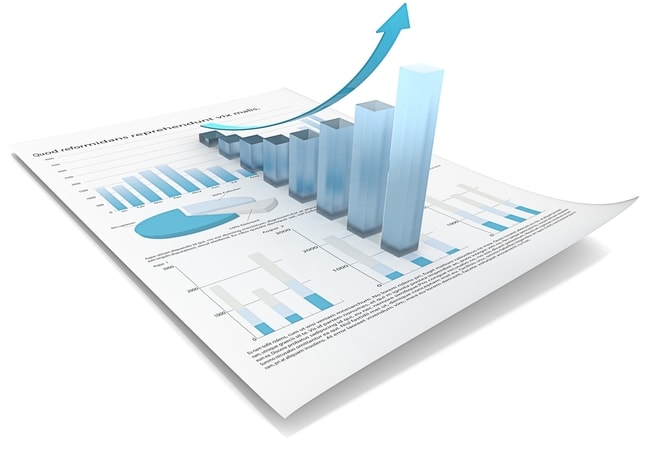Factors to Consider When Analyzing Data for Capstone Projects
Data analysis is the process of cleaning, evaluating, and summarizing data with the intention of deducing insights, establishing relationships, testing hypothesis, and most importantly, answering research questions. It involves a systematic application of statistical or non-statistical techniques to describe and conclude data.
The methods and techniques used to analyze data is influenced by the type of data one is dealing with. This article focuses mainly on the factors to consider in analysis of both qualitative and quantitative data, and the role of statistics in conducting the analysis.
The following are the reasons why scholars must analyze data collected for their capstone projects.
- Data analysis helps in finding patterns especially when dealing with qualitative data.
- Through analysis of data, people are able to find solutions for practical problems and give answers to research questions.
- Proper analysis enables scholars to make correct deductions and draw sensible conclusions out of their research project, and ensures that the readers can get dependable information from capstone projects that can be cited as reference by researchers in future.
- The raw data obtained after research is crude, complex, and bulky. Data analysis processes the complex data and breaks it into simpler forms that are easily understandable and interpretable.
- Decisions and interpretations that are purely based on correct statistical processing of quantitative data obtained from research ensures no room for human bias. This makes the capstone project credible and more believable to its audience.
- Proper analysis of data gives a bases for further research because it clearly demonstrates what questions have been answered and which ones have not; as well as the gaps that gave not been addressed by the particular capstone project.
- It helps in clarifying information and through the findings, the audience can gladly relate with, and understand the significance and implications of the project.

Factors to Consider when Analyzing Data
1. Type of Data to be Analyzed
Data collected for research purposes is mostly grouped into qualitative and quantitative data. The approach or technique used in analysis depends whether qualitative or quantitative data is being analyzed. The form of analysis in qualitative data is also influenced by the specific qualitative approach used when collecting the data in question, and the form taken by the data itself. Quantitative data on the other hand is numerical in nature and requires statistical approaches for analysis. These are discussed later in this article.
2. The Purpose of the Analysis
Before starting the process of analyzing data, one has to ask themselves why they are conducting the analysis. It is the purpose-driven approach that motivates the choice and use of different analysis techniques in the quest to achieve the desired objective.
3. Possession of the Necessary Skills for Analysis
To be able to correctly and successfully conduct data analysis, one must have the skills required for the task. They should have substantial knowledge and understanding in analysis, more than the mere rationalization for choosing one analysis method over another.
4. Methods that were Used in Data Collection
The ideal stage of selecting data analysis methods is during the planning phase of the research. The collection and analysis techniques should be chosen concurrently so as not to face challenges of confusion during the implementation stage.
5. The Level of Bias in Making Inferences
One should strive to ensure the process of collecting and analyzing data is not biased at all. This is because the occurrence of bias when collecting information, or selecting analysis procedures increases the probability error in the findings. In return, one ends up drawing a biased on incorrect conclusion and therefore the purpose of the project may not be achieved.
6. Acceptable Field Norms and Customs
Each field of study has acceptable norms and practices that have to be adhered to during data analysis. These norms are based on the factors of the nature of variables, and assumptions about the study population where the data was collected from.
7. Level of Significance
Data analysis should not be conducted just as a routine practice. One should be able to determine and demonstrate the potential for the research findings to be of importance to the audience and their significance to the population from which the data was collected. Properly analyzed data identifies trends, relationships, and patterns, and reveals their statistical significance in real-life.
8. Clarity in Objectivity of Outcome Measurements
A poorly stated objective outcome measurement cannot be corrected no matter the level of statistical analysis the data is subjected to. This increases the probability of wrongly manipulating the interpretations and hence, misleading the audience.
9. Availability of Tools and Instruments for Analysis
Most of qualitative data is collected and analyzed concurrently through simple approaches such as observation and listening. However, with quantitative data, the numerical values have to be subjected to serious statistical analysis that may require use of software such as the Statistical Analysis System(SAS), Statistical Package for Social Science (SPSS) among others. Despite the availability of relevant tools and software for data analysis, it is important to possess excellent skills to be able to operate the tools and correctly use the software.
10. Reliability and Validity of Data
Reliability and validity are common basics of data integrity. To avoid compromising integrity of the research data and the project in general, one must be able validate the stability, accuracy, and replicability of the analytical processes.
The discussed factors are general for both qualitative and quantitative data, but the list is not limited. There are still Many more to explore.
The Role of Statistics in Data Analysis for a Capstone Project
Statistics in the context of capstone projects is basically the application of mathematical formulae in the technical analysis of numerical data collected during research. It processes complex data collected by scholars and researchers in an attempt to identify meaningful trends and behavior, establish relationships between variables, or derive inferences and conclusions that can help in solving the real-world problems faced by populations. Generally, below is a list of reasons why statistics is indeed very important in data analysis:
- The concepts of statistics are used to organize information. This makes it easier for scholars to effectively complete their capstone projects and produce more accurate results.
- Statistics facilitates the removal of unwanted chunks of information collected during research and arranges the relevant data using simple procedures that are not tiresome.
- It helps in predicting patterns, grouping, and processing the right data for optimal research results.
- Statistical data analyses involve representing information in interactive and effective visualizations. This makes it more interesting and comprehensible.
Statistical Data Analysis
Statistical data analysis usually attempts to quantify data collected in quantitative research, by the means of statistical methods. The main categories used in capstone projects are the descriptive and inferential statistics. The statistical analysis of data mainly focuses on the interpretation of the findings to derive meaningful inferences and predictions.
1. Descriptive Statistics
Also known as descriptive analysis, this method describes the main characteristics of various multi-purpose types of data. Generally, descriptive statistics tries to demonstrate the relationship between variables in a population or sample that is a representative of the entire study population. The data is then summarized in various statistical methods of analyses such as the mean, median, mode, percentage, frequency, and range. However, it is important to note that, this data does not explain the rationale behind the numerical values obtained. Clearly understanding the research question and the purpose of data analysis helps in knowing which descriptive statistics is best suited for the data.
2. Inferential Statistics
Inferential statistics uses data obtained from a random sample from a study population, to draw and explain inferences concerning the entire population. The characteristics of the random sample are examined carefully and the findings are tested according the research hypothesis. Hypothesis testing determines whether the findings obtained from studying the specific characteristic of the sample population gives enough evidence that can lead to a general conclusion that, the specific characteristic complies with the whole population.
Factors to Consider when Choosing a Statistical Methods and Tests
Statistical tests refer to the precise tools used in analyzing the quantitative data gathered when conducting research for a capstone project. The choice of the test depends on the following factors:
- The number of variables involved in the study.
- Aims and objectives of the research.
- Type of data and the required level of measurement.
- Distribution of the data.
- Type of research design used.
Preparing Data for Statistical Analysis
Data preparation is the first step in analyses that transforms the raw information into a meaningful and legible data. The preparation is achieved through data validation, editing, and coding as discussed below.
1. Data Validation
Validation is conducted to check whether the collection of the data was done without any bias. Generally, data validation is conducted in order to:
- deduce whether all the respondents were individually interviewed or not,
- ascertain whether the research respondents were selected according to the given criteria,
- confirm compliance to the data collection procedures, and
- make sure that all the questions were actually queried without excluding some.
2. Editing
Data editing before analyzing is conducted to identify and remove any aspects of the raw data that may hinder the accuracy of the capstone findings.
3. Coding Data
This involves grouping the data and identifying responses obtained from the research with assigned codes. It is a way of simplifying the complex masses of raw data.
Tools used in Statistical Data Analysis
There are various tools and software that are used in statistical data analysis. Among others, the most commonly used include Stat soft, Statistical Analysis System(SAS), and Statistical Package for Social Science(SPSS). Despite the fact this software makes data analysis a fast and simple process, excellent statistical knowledge and skills are required to successfully handle them. In this article, only the SPSS has been discussed. It is the utmost used software across research fields and among survey companies who deal with large chunks of data.

SPSS Data Analysis for a Capstone Project
SPSS is used by scholars and researchers for difficult statistical data analysis. It is used as a comprehensive statistical package for quantitative data analysis. The raw data prepared on an excel file is imported into the SPSS then a specific command is given to it based on what is being analyzed.
The process of analyzing data for a capstone project may sometimes be a challenging task. The guidelines below help in conducting comprehensive SPSS analysis.
- All the relevant data for the capstone project should be tabulated correctly in an excel file and in the correct form.
- Using the excel file, the raw data should be transferred to the SPSS software, ready for analysis.
- Depending on the kind of data to be analyzed, the SPSS is commanded accordingly to bring the desired results.
- After commanding the software, the analysis is fast and the results should be retrieved. The results produced here are very accurate and efficient, as long as the right procedures were carried out.
- An analysis of any graphs and charts should be done. In case of any difficulties in understanding the outcome, one can find analysis help from an SPSS expert.
- The necessary conclusions and inferences are drawn according the results of the analysis.
Advantages of Using SPSS Software for Data Analysis
SPSS is mostly preferred for the following reasons:
- It facilitates compilation of descriptive statistics with ease.
- It is applicable in both parametric and non-parametric analyses.
- The SPSS software uses the Graphical User Interface(GUI) to produce graphical representations of data.
- It also presents the user with options to generate scripts that facilitate automatic analysis and more improved and progressive statistical processing of information.
- The results are effective, and reliable.
Statistical techniques can sometimes be complicated, especially when the person using them has underdeveloped statistical skills. It is therefore very important to consult professional capstone data analysis service so as not to make the mistake of submitting a project whose data is poorly analyzed and therefore giving the wrong inferences. In order to have a complete capstone project that is confidently defendable before a panel, one should not shy away from spending their money to hire a person to analyze data for the capstone project, or to buy capstone data analysis services from professional capstone data analysts.
These experts possess excellent statistical skills to effectively run data on the various statistical software, SPSS being one of them, and methods of analysis to validate the process. Nevertheless, when seeking help, the students or researchers need to be extra careful not to end in the hands of online fraudsters. Only experienced SPSS capstone data analysts should be entrusted the task of offering the best capstone data analysis service.
Following the tips given in this article can be of good help in analyzing own capstone project data. However, if one chooses to hire the analysis services, they have to protect data integrity, whether dealing statistical or non-statistical data. Haphazard statistical analysis of capstone data can give wrong results that may alter the implications and significance of scientific research findings, mislead the readers, result to poor grades awarded for the capstone project, and adversely influence the perception of research by the general public.





